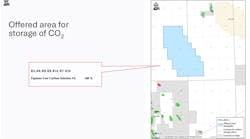Over the past four years, Svendborg Brakes has been developing the SWET Brake, which combines dry and wet friction braking in one system. A wet brake is a totally encapsulated braking system featuring fluid inside a chamber with a brake disc and brake pads.
The fluid has two main functions. One is cooling and greasing the brake disc and pads to prevent the temperature exceeding the permitted limit. The other function is to participate in the braking process. Much of the braking energy will be transmitted to the fluid as inner molecular friction. To prevent damage to the fluid inside the brake caliper while the brake disc is rotating, the SWET Brake stores the fluid in a tank, only injecting it into the caliper once the braking sequence is activated.
The system is designed to minimize service frequency, brake pad wear and noise during braking. Other features, claimed to be unique for the offshore sector, include:
- Totally encapsulated, and therefore protected from all external environmental influence
- Submersion in oil creates distributed heat dissipation, and therefore no heating-up of individual parts
- The system maintains a continuous high braking torque close to the point of blocking
- No particle release from the pads, therefore no contamination through brake pad dust.
Svendborg is building a large test rig for the SWET Brake at its headquarters in Vejstrup, Denmark, which it claims will be the first 1-1 scale test stand of its kind in Europe, providing a brake-down capability of 4 MW. The facility will comprise a large flywheel with a radius of 3.2 m and a total weight of 11 tons. The flywheel, powered by a 75-KW electric motor, will rotate at up to 750 rpm. Braking torque will be 100,000 N for a braking time of 10 sec.


